Explore Daegu - South Korea Travel, Asia
Daegu, officially known as Daegu Metropolitan City, is one of the largest cities in South Korea, located in the southeastern part of the country. It is situated in an inland basin surrounded by mountains, including Palgongsan and Biseulsan, and is traversed by the Geumho and Nakdong Rivers. The city covers an area of about 884 square kilometers and is a central hub in the Yeongnam region, known for its fertile land and strategic location between Seoul and Busan.
Population Approximately 2.4 million people.
Economy: Daegu is an important manufacturing center, known for its textile and electronics industries. Major companies headquartered in Daegu include Dongbu Group, Keimyung University, and Daegu Bank. The city is also a hub for medical services, with several large hospitals and medical schools.
Attractions: Daegu Yangnyeongsi Herb Medicine Market, Donghwasa Temple, Daegu Duryu Park, Daegu Tower
South Korea
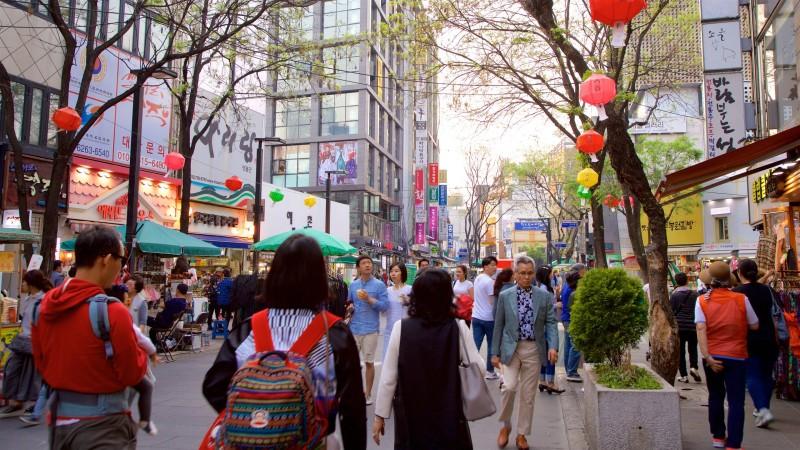
Overview of Daegu
History & Cultural Influence
Historically, Daegu has been an important administrative, economic, and cultural center. It was the capital of the Gyeongsang province during the Joseon Dynasty and played a significant role in Korea's textile industry during the 20th century. The city has a rich history dating back to the prehistoric era, with archaeological finds indicating human settlement for thousands of years. Daegu is known for its vibrant cultural scene, including festivals, traditional markets like Seomun Market, and its role in the Korean Wave, producing famous celebrities. The city also hosts significant cultural events and is recognized for its contributions to modern arts and culture.
Interaction with The Locals
Visitors to Daegu can expect to interact with a predominantly Korean population, as the city is largely homogeneous with few non-Koreans residing there. There are also English-speaking Westerners involved in education and a small number of American military personnel due to the presence of U.S. military bases. The people of Daegu are known for their friendliness and hospitality towards visitors. The city has a rich cultural heritage and is proud of its history and traditions, which are often shared with tourists. Daegu is also a center for modern arts and culture, attracting international visitors to its cultural events and festivals.
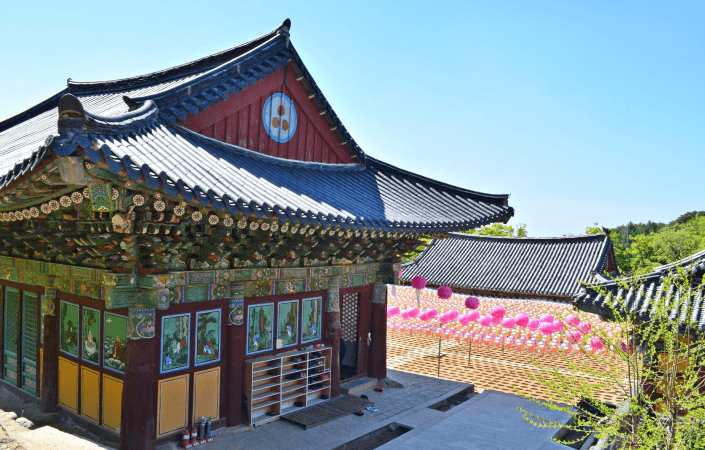
Donghwasa Temple - © koreanbridge
Top Attractions in Daegu
Daegu offers a mix of cultural and natural attractions, perfect for travelers looking to explore South Korea. Must-visit spots include Seomun Market, one of the country’s largest traditional markets, and Apsan Park, which boasts stunning panoramic views of the city. Don’t miss Donghwasa Temple on Palgongsan Mountain for a serene glimpse into the region’s rich Buddhist history.
Seomun Market
Location: 10, Keunjang-ro 28-gil, Jung-gu, Daegu, South Korea
As one of Korea's largest and oldest traditional markets, Seomun Market is a bustling hub where the past and present meet. Famous for its energetic atmosphere, it’s the perfect spot to dive into local culture. You’ll find everything from vibrant textiles and traditional clothing to a tempting array of street foods. Be sure to try local favorites like dumplings and rice cakes as you explore the countless stalls. It’s a great place to shop for unique souvenirs and immerse yourself in the flavors and traditions of Daegu.
Donghwasa Temple
Location: 250, Donghwasa-ro, Daegu, South Korea
Located on the slopes of Palgongsan Mountain, Donghwasa Temple is a historical gem dating back to the 6th century. This Buddhist temple is renowned for its peaceful ambiance and stunning architecture, including a massive statue of the Buddha. Visitors can even participate in temple stays, allowing them to experience traditional Buddhist practices and connect with the serene natural surroundings. It’s an ideal spot for those seeking spiritual tranquility and cultural enrichment.
Daegu Art Museum
Location: 140, Sangyeok-ro, Daegu, South Korea
For art lovers, the Daegu Art Museum is a modern cultural hotspot. The museum hosts a wide variety of contemporary exhibitions, showcasing works from both local and international artists. The building itself is architecturally striking, making it as much of a visual experience as the art inside. In addition to its exhibitions, the museum offers cultural events and educational programs, making it a perfect stop for anyone interested in Korea’s evolving art scene.
Daegu 83 Tower
Location: 200, Duryu-dong, Daegu, South Korea
Standing at 202 meters, Daegu 83 Tower is a must-visit for stunning views of the city. Its observation deck offers panoramic views, and if you're in the mood for a meal with a view, the revolving restaurant is a unique dining experience. The tower is not just about the view, though—it’s also a cultural landmark where visitors can learn about its history and significance in Daegu.
Gyesan Cathedral
Location: 36, Gyesan-dong, Daegu, South Korea
Gyesan Cathedral is one of the oldest and most beautiful Catholic churches in Daegu. Blending Romanesque and Gothic architectural styles, this cathedral stands as both a religious and historical landmark. Visitors can take guided tours to learn about the history of Christianity in the region and the role the cathedral played in the local community. The peaceful atmosphere and beautiful architecture make it a serene stop for anyone exploring Daegu.
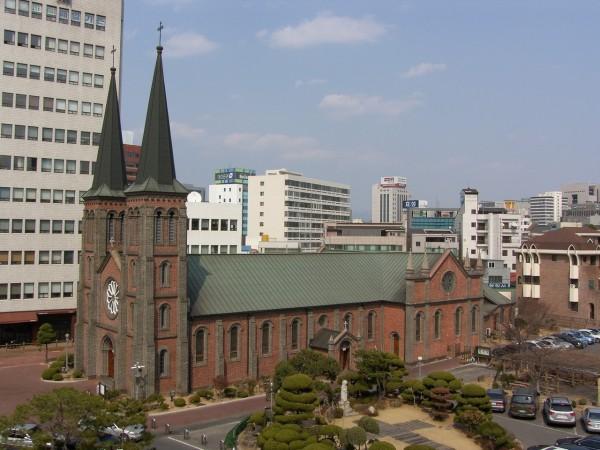
Gyesan Cathedral - © Jubilee of Mercy
Must-Try Dishes in Daegu
Daegu is famous for its delicious local cuisine, with must-try dishes like Daegu Makchang, a flavorful grilled pork intestine dish that’s beloved by locals. Another favorite is Napjak Mandu, thin, crispy dumplings served with a side of spicy dipping sauce. Be sure to visit the bustling street food stalls for authentic tastes of Daegu's vibrant food culture!
- Flat Dumplings (Napchak Mandu): Unlike typical dumplings, Daegu's flat dumplings are known for their unique shape and simple filling, which includes shredded vegetables and glass noodles. The appeal of these dumplings lies in their light and satisfying taste, making them a popular snack among locals and visitors alike.
- Ddaro Gukbap: This dish became a specialty in Daegu after the Korean War. It features a hearty soup served separately from the rice, a practice that originated in Daegu. The soup is rich in flavor, often enhanced with plenty of green onions, and is a beloved comfort food in the region.
- Makchang (Grilled Cow Abomasum): Makchang is a popular dish in Daegu, consisting of grilled cow abomasum (the fourth stomach of a cow). Known for its chewy texture and rich flavor, it is often enjoyed as a snack alongside a glass of beer. This dish is a testament to the Korean love for grilled meats and intestines.
- Dongin-dong Jjim Galbi: This dish features braised beef short ribs cooked in a spicy and savory sauce, a style that originated in the Dongin-dong area of Daegu. The tender meat and flavorful sauce make it a favorite among meat lovers and a must-try for those exploring Daegu's culinary scene.
- Yellow Guksoo: A variation of kalguksu, yellow guksoo is a noodle dish made with dough that includes bean powder, giving it a distinctive yellow color. Served in a clean and flavorful anchovy broth, this dish is simple yet addictive, often garnished with green cabbage.
- Sashimi Moochim: This dish is perfect for fans of spicy food. It consists of fresh sashimi seasoned with spicy Korean marinades, offering a sweet and spicy flavor. The combination of raw seafood and vegetables marinated to perfection makes it a refreshing choice for those looking to awaken their taste buds.
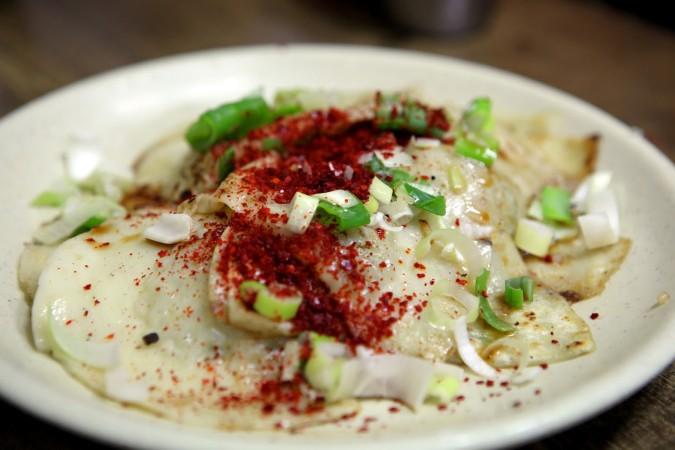
Flat Dumplings (Napchak Mandu) - © Travel Mania Club
Weather in Daegu: Best Time to Visit
- Temperatures: Daegu experiences a humid subtropical climate with four distinct seasons. In winter, average high temperatures hover around 5.8°C (42°F) in January, while summer highs can soar to 31°C (88°F) in August. January brings the coldest nights, with temperatures dipping to -3.7°C (25°F), and occasionally dropping below -13°C (9°F). In contrast, summer nights remain warm, with lows around 22.6°C (73°F) in August.
- Rainfall: The city’s rainy season runs from June to August, with July and August being the wettest months. July sees around 225 mm (8.9 inches) of rainfall, while August averages 245 mm (9.6 inches). The driest months are January and December, with only about 20 mm (0.8 inches) of rain each. Daegu receives about 1080 mm (42.5 inches) of rain annually.
- Other Weather Patterns: Daegu tends to be humid year-round, with humidity levels ranging from 61-80%. Winters are typically sunny, though snow is rare due to the city’s southeastern location and low winter precipitation. Spring and fall offer mild and pleasant weather with plenty of sunshine, while summer brings hot, muggy conditions with heavy rain. During the peak of summer, temperatures can exceed 35°C (95°F).
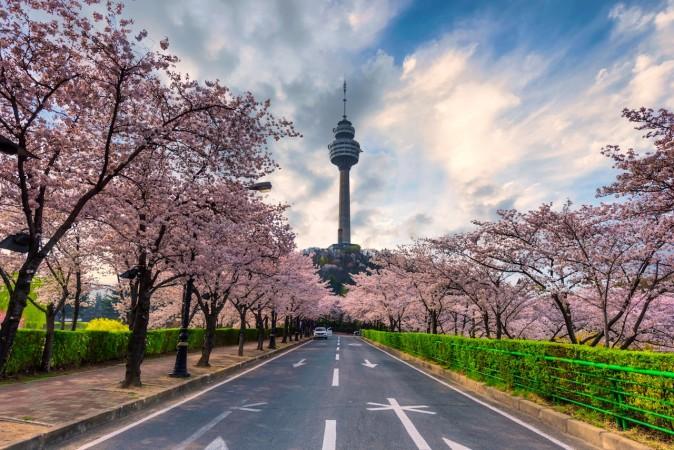
Daegu Tower - © Shutterstock (@Rakchat)
Festivals & Local Celebration
Colorful Daegu Festival (Daegu Colorful Festival)
- Time: Usually held in May (2024 dates: May 11-12)
- The Colorful Daegu Festival is a vibrant street celebration that brings the city to life with parades, performances, and artistic displays. The highlight of the event is the Colorful Parade, featuring elaborate costumes and eye-catching floats. In addition to the parade, visitors can enjoy street performances, markets, exhibitions, and various cultural experiences, all of which celebrate Daegu’s creativity and rich cultural diversity.
Daegu International Musical Festival (DIMF)
- Time: June
- The Daegu International Musical Festival (DIMF) is a major event for musical theater enthusiasts, featuring performances from both local and international theater companies. The festival showcases a range of productions, from official invited shows to creative new works and student performances. Along with musical performances, attendees can enjoy workshops, exhibitions, and unique events like backstage tours and star meet-and-greets, all culminating in an awards ceremony that celebrates excellence in musical theater.
Daegu Chimac Festival
- Time: July
- The Daegu Chimac Festival is a food lover's paradise, dedicated to the beloved Korean pairing of fried chicken and beer, known as "chimac." Held in Duryu Park, the festival offers tastings from various vendors and franchises, live music performances, and even cooking contests. Whether you’re enjoying K-pop and rock concerts or participating in fun events, the Chimac Festival combines food, drink, and entertainment in a lively and unforgettable atmosphere.
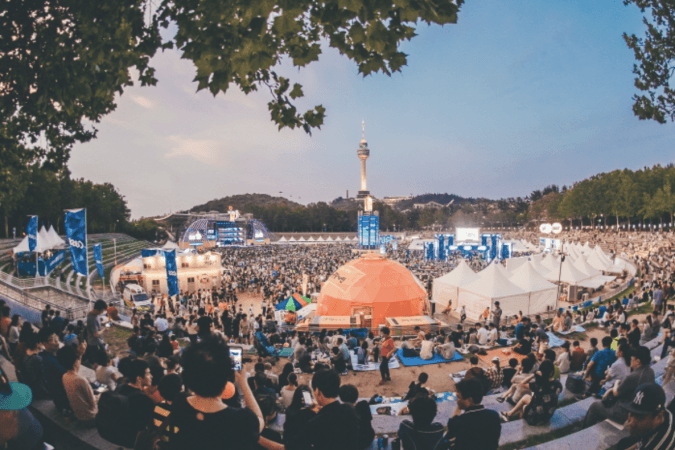
Daegu Chimac Festival - © Chosun.com
Shopping in Daegu
- Daegu Yangnyeongsi Herb Medicine Market: This is the largest traditional herbal medicine market in Asia, dating back to the 15th century. Browse stalls selling a wide variety of Korean medicinal herbs, teas, and health products. Look for traditional Korean ginseng, red ginseng products, and herbal remedies as unique souvenirs.
- Seomun Market: Daegu's largest traditional market, offering a diverse range of goods from clothing and accessories to household items. You can find traditional Korean handicrafts, ceramics, and textiles at the market's specialty craft stalls. Try local street food and snacks as you explore the lively market atmosphere.
- Palgongsan Mountain Craft Village: Located at the base of Palgongsan Mountain, this village is known for its traditional Korean craft workshops. Watch artisans demonstrate techniques for making pottery, wood carvings, and other handmade items. Purchase unique, locally-made souvenirs like ceramic tea sets, wooden figurines, and traditional fans.
- Daegu Duryu Park: The park's cultural center has a gift shop selling a variety of Korean souvenirs and crafts. Browse for items like traditional Korean fans, silk scarves, and decorative paper products. The park also hosts seasonal festivals and markets where you can find additional local handicrafts.
- Daegu International Airport: The airport's duty-free shops offer a wide selection of Korean beauty products, snacks, and souvenirs. Pick up ginseng, Korean cosmetics, traditional teas, and other last-minute gifts before your departure.
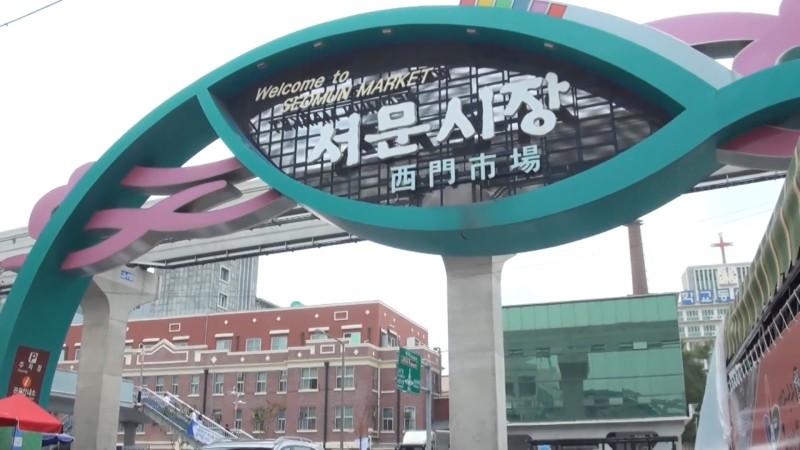
Seomun Market - © Korea Fan Club
Culture Etiquette in Daegu
- Greetings and Bowing: When meeting someone in Korea, a slight bow is considered polite, and the depth of the bow reflects the level of respect. While handshakes are common, especially among men, using both hands for the handshake shows added respect and is a nice touch.
- The Two-Hand Rule: Always use both hands when giving or receiving items—whether it’s paying in a shop, receiving a gift, or pouring and accepting drinks. This gesture shows respect and is an important part of Korean etiquette.
- Dining Etiquette: At mealtimes, it’s polite to wait for elders or seniors to start eating before you do. When using chopsticks, handle them with care—never point them at others or stick them upright in rice, as this is associated with funerals. Pouring drinks for others is customary, and it's polite to let others pour for you as well.
- Shoes: When entering someone’s home, or certain traditional restaurants and buildings, be sure to remove your shoes as a sign of respect.
- Public Behavior: Public displays of affection are generally frowned upon in Korea, so it's best to keep gestures subtle. Be mindful of your volume in public spaces, as Koreans often value quieter environments.
- Respect for Elders: Elders are given extra respect in Korean culture. This can mean using honorific language, offering your seat on public transportation, or serving them first during meals.
- Dress Code: Modest dress is expected, especially when visiting religious sites or attending formal occasions. It's a simple way to show respect for local customs.
- Gift-Giving: If you’re invited to a Korean home, bringing a small gift is a thoughtful gesture. Avoid wrapping gifts in black or white paper, as these colors are traditionally linked to funerals.
- Temple Etiquette: When visiting temples, make sure to dress modestly and remain respectful of the religious customs and practices you may encounter.
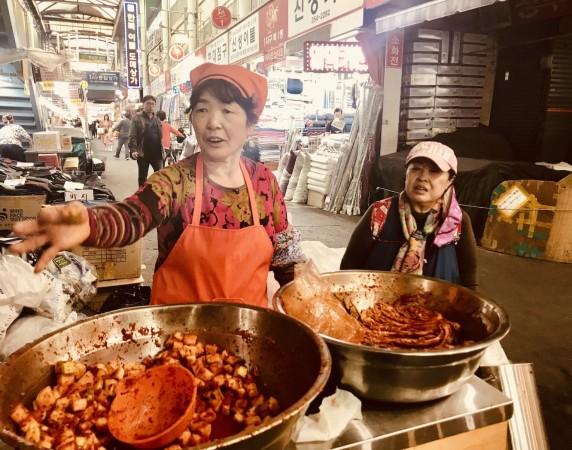
Seomun Market - © leightontravels
Essential Travel Information
Getting Around Daegu
Airport Transfers
- Daegu International Airport is the main airport serving Daegu, located in the western part of the city.
- Airport limousine buses run directly from the airport to major hotels and bus terminals in Daegu. The journey takes around 30-40 minutes.
- Taxis are also available from the airport, with the fare to downtown Daegu costing around 20,000-25,000 KRW.
Public Transit
- Daegu has an extensive subway system called the Daegu Metro, with 3 lines covering major areas of the city. Trains run from around 5:30am to midnight.
- Buses are another convenient way to get around Daegu. There are local city buses, express buses, and intercity buses to other parts of South Korea.
Taxis
- Taxis are widely available in Daegu and are a good option for shorter trips or late at night when public transit is less frequent.
- Fares start at 2,800 KRW for the first 2 km, then 100 KRW for every 144 meters after that. There are additional charges for late night, holidays, and tolls.
- Most taxi drivers do not speak English, so having your destination written in Korean is helpful.
ATM and Banking Services
- ATM Availability: ATMs are easy to find throughout Daegu, conveniently located in banks, convenience stores, and various public areas. Many ATMs operate 24/7, though those inside bank branches may have more limited hours, so it’s always good to plan ahead.
- International Card Usage: If you're using a foreign card, look for ATMs marked with "Global Services" or "Global ATM" signs, along with Visa and Mastercard logos. Major banks like Daegu Bank (DGB) and global banks such as Citibank offer ATMs that are compatible with international cards, making withdrawals straightforward for travelers.
- Banking Options: In addition to Daegu Bank (DGB), which is a well-known local institution offering services like mobile banking through their BANKON app, other banks such as Busan Bank and Citibank also operate in Daegu, providing both locals and visitors with a range of banking options.
- ATM Fees: While withdrawing cash with a foreign card, be mindful that ATM fees may apply. It's a good idea to check with your home bank about any international withdrawal fees beforehand. Some banks may even offer fee-free withdrawals through partner institutions, so keep an eye out for those options.
- Currency Exchange: Currency exchange services are available at banks and dedicated exchange offices around the city. However, be cautious of Dynamic Currency Conversion (DCC) at ATMs, as it often provides less favorable exchange rates compared to local currency withdrawals.
Where to Stay in Daegu
As a bustling city, Daegu offers a wide variety of accommodation options to suit every traveler’s needs:
- Hotels: Daegu features both international and local hotel chains, providing comfort and convenience for travelers with different budgets and preferences.
- Guesthouses and Hostels: For budget-conscious visitors, guesthouses and hostels are popular choices, especially among younger travelers and backpackers.
- Traditional Accommodations: If you're looking for a cultural experience, consider staying in a hanok, a traditional Korean house, for a more authentic stay.
- Serviced Apartments: Ideal for longer stays, serviced apartments offer more space and amenities, making them perfect for families or those seeking a home-away-from-home feel.
- Business Hotels: If you're in town for work, Daegu has numerous business hotels conveniently located near commercial districts, offering all the necessary amenities for business travelers.
Articles for you

Explore Yala National Park - Sri Lanka Travel, Asia
Tucked away in Sri Lanka’s southeastern corner, Yala National Park is where wild nature meets deep tradition. Known worldwide for its leopard population, the park is also home to elephants, sloth bears, crocodiles, and hundreds of bird species. Beyond wildlife, Yala opens doors to a cultural landscape dotted with ancient temples, Buddhist ruins, and coastal villages. For travelers seeking more than just a safari, Yala offers a chance to explore eco-tourism, local communities, and sacred heritage sites.
Population: The Yala National Park area doesn’t have a human population.
Economy: The economy around Yala National Park thrives on a blend of eco-tourism, agriculture, and local services. Safari tours, eco-lodges, and cultural experiences drive steady income for nearby towns like Tissamaharama and Kataragama, supporting thousands of families.
Landmarks: Famous for Block I of Yala and wildlife encounters, including elephants, sloth bears, crocodiles, and exotic bird species.

Explore Galle - Sri Lanka Travel, Asia
Nestled on Sri Lanka’s southern coastline, Galle is a vibrant city where history meets the sea. Its cobbled streets, colonial architecture, and serene beaches make it a must-visit destination for travelers seeking a blend of culture, adventure, and relaxation. A UNESCO World Heritage site, Galle captivates visitors with its Dutch Fort, bustling markets, and friendly locals. Whether you’re exploring the ramparts at sunset or savoring fresh seafood by the shore, Galle promises an unforgettable journey into Sri Lanka’s heritage.
Population: Approximately 113,000 in 2023.
Economy: Galle’s economy thrives on tourism, trade, and fisheries. The city’s historic fort, colonial architecture, and coastal charm draw thousands of international visitors each year, making tourism its main economic driver. Fishing remains vital for local livelihoods, supplying fresh seafood across the region.
Landmarks: Famous for the Galle Fort, Dutch Reformed Church & Maritime Museum, and Unawatuna Beach.

Explore Bentota - Sri Lanka Travel, Asia
Nestled along Sri Lanka’s southwestern coast, Bentota is a tropical paradise that blends golden beaches, vibrant culture, and thrilling adventures. Famous for its calm waters, luxury resorts, and scenic river estuary, Bentota has become a top destination for travelers seeking both relaxation and authentic experiences. From serene beach walks at sunrise to adrenaline-pumping water sports, this coastal town offers a perfect balance of leisure and exploration. With its proximity to Colombo and Galle, Bentota is easy to reach, making it an ideal stop for both short escapes and extended holidays.
Population: Approximately 37,000 in 2023.
Economy: Bentota’s economy thrives mainly on tourism, which drives local businesses such as hotels, restaurants, and wellness retreats. The town also benefits from fishing, coconut cultivation, and handicrafts like wood carving and batik textiles. Many residents rely on the growing demand for water sports and Ayurvedic treatments, making tourism the backbone of both income and employment in the area.
Landmarks: Famous for Bentota Beach, Bentota River Safari, and Kande Vihara Temple.

Explore Mirissa - Sri Lanka Travel, Asia
Mirissa is a charming coastal town on Sri Lanka’s southern shoreline. Known for its golden beaches, turquoise waters, and vibrant marine life, it has become a must-visit stop for travelers exploring the island. Many come for whale watching, surfing, and sunset views at Coconut Tree Hill, but Mirissa offers much more than postcard beauty. The fishing boats you see anchored by the bay carry generations of stories. Local traditions, delicious cuisine, and a laid-back rhythm of life shape every visitor’s experience.
Population: Approximately 4,700 in 2023.
Economy: Mirissa’s economy is largely shaped by its coastal location. Fishing has long been the backbone of local livelihoods, with generations relying on the Indian Ocean for income. In recent decades, tourism has become the main driver of growth, thanks to whale watching, surfing, and beachside hospitality.
Landmarks: Famous for Mirissa Beach, Coconut Tree Hill, and Parrot Rock Bridge.

Explore Nuwara Eliya - Sri Lanka Travel, Asia
Tucked away in the Central Highlands of Sri Lanka, Nuwara Eliya is often called “Little England”. With its rolling tea plantations, cool misty mornings, and colonial charm, this mountain town feels like a step into another world. Travelers come here to breathe fresh air, walk through flower gardens, sip the finest Ceylon Tea, and enjoy a pace of life far from the island’s busy cities. Whether you’re drawn by scenic landscapes, heritage architecture, or the warmth of its people, Nuwara Eliya is a destination that blends nature, culture, and history in perfect harmony.
Population: Approximately 781,000 in 2023.
Economy: Nuwara Eliya’s economy thrives mainly on tea production, as it sits in the heart of Sri Lanka’s central highlands, famous worldwide for Ceylon Tea. The city also benefits from a growing tourism industry, attracting visitors with its colonial charm, cool climate, and scenic landscapes.
Landmarks: Famous for Gregory Lake, Hakgala Botanical Garden, and Victoria Park.

Explore Sukau - Malaysia Travel, Asia
Nestled on the banks of the Kinabatangan River in Sabah, Malaysian Borneo, Sukau is a destination where wildlife, culture, and conservation come together. Known as one of Asia’s top spots for river safaris and eco-tourism, this quiet village offers a front-row seat to encounters with Bornean orangutans, pygmy elephants, proboscis monkeys, and exotic birdlife.
Population: Approximately 1,400 in 2019.
Economy: Sukau’s economy is shaped by its riverine location and natural resources. Traditionally, the Orang Sungai community relied on fishing, small-scale farming, and forest gathering for their livelihood. Today, the village has shifted toward eco-tourism, with river cruises, jungle trekking, and homestays providing income.
Landmarks: Famous for the Kinabatangan River cruises, Gomantong Caves, and Ox-bow lakes and wetlands.
